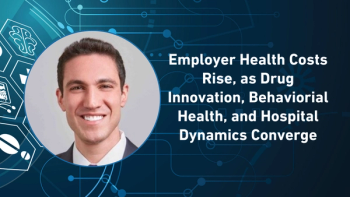
- Pharmaceutical Commerce - May 2009
The Landscape of Enterprise IT Applications for Life Sciences
New IDC study finds that Oracle is the now the top life-sciences IT vendor; meanwhile, are there ‘demons’ in the pharma supply chain?
Surprise! Oracle now leads SAP in application revenue within life sciences, according to a study completed by IDC Health Industry Insights (Framingham, MA) in May. It’s not that SAP, whose ERP and financial systems are widely used throughout the corporate world, has fallen out of favor, but more that the seemingly endless appetite for acquisitions by the Redwood Shores, CA, IT firm has flanked SAP in several enterprise applications important to life sciences, including customer-relationship management (CRM), R&D (both clinical and discovery), HR and supply chain management, among others.
Eric Newmark, research manager at IDC Health Industry Insights, says that SAP and Oracle were neck-and-neck five years ago, but since then, SAP’s “preference for internal development rather than acquisition, coupled with turnover among its life science leadership, has led to slower revenue growth.”
Still, the enterprise market for life sciences is extremely fragmented. While Oracle is the clear leader with revenues of $219 million in 2008, says IDC, its share of the market was 7.43%. The top ten vendors collectively control only 29% of the $2.95 billion spent on enterprise applications in 2008, says IDC.
“Enterprise solutions” are defined by IDC as falling into these application buckets:
- Business intelligence/analytics
- Clinical software
- CRM
- Content management
- Revenue management/ERP
- HR
- Manufacturing
- Supply chain management
- Product life-cycle management
- R&D infomatics
- R&D discovery platforms
Oracle and SAP are notable for having multiple application offerings; some of the other companies on the Top Ten list are specialized applications that nevertheless affect enterprise-level applications. Such is the case for SAS Institute (#3), an analytics provider, or or e-notebook (from CambridgeSoft and Symyx) and e-clinical applications (from Phase Forward and Medidata). IDC says that over 50% of clinical data-gathering is now being handled electronically.
Supply chain focus
Another report, issued more or less at the same time as the Top Ten one, hones in on supply-chain issues for life sciences. IDC polled 127 life sciences organizations for their 2009 IT priorities in support of supply-chain initiatives. The most common driver (see table) was business intelligence/analytics, with 21.3% of respondents. These were followed closely by data warehousing (20.7%), supply chain monitoring (20.7%) and demand forecasting (17.5%).
“Revenue leakage”—the problem of misallocated funds in fulfilling orders, invoicing and chargebacks—are a common theme, as shown by the priorities for contract management and claims reconciliation.
IDC also polled respondents on what their vendor choices will be for meeting these objectives. The top choice (with 19.2%) was to work with an ERP vendor, but an equal number will seek best-of-breed vendors. “Surprisingly,” says IDC, “nearly as many companies (18.7%) plan to build out their supply-chain capabilities in-house”—which could be indicative of a desire to conserve cash.
IDC Health Industry Insights is currently finalizing a new study specifically on chargeback discrepancies, which will update a 2007 study. According to Newmark, an intriguing question has arisen from the research: “Why do chargeback-related discrepancies always tip toward the manufacturer’s side of the scale.” If these discrepancies were truly an artifact of poor data-handling, one would expect them to be fairly balanced between the manufacturer and trading partners. “However, virtually every case of revenue leakage uncovered thus far has been in the same direction, to the disadvantage of the manufacturer,” he writes, while cautioning that there is not enough evidence to “begin demonizing wholesalers.”
IDC is still soliciting input for the report, but expects to complete and publish it
soon. PC
Articles in this issue
over 16 years ago
2009: a 'swan dive' in 3PL revenueover 16 years ago
Building the IT Foundation for the Next-Generation Sales Forceover 16 years ago
AmerisourceBergen Keeps a Focus on Independent Pharmacyover 16 years ago
Pharma Gift, Marketing and Advertising Reporting Rules Multiplyover 16 years ago
Evidence Generation Is the Foundation to Optimal Product PositioningNewsletter
Stay ahead in the life sciences industry with Pharmaceutical Commerce, the latest news, trends, and strategies in drug distribution, commercialization, and market access.




